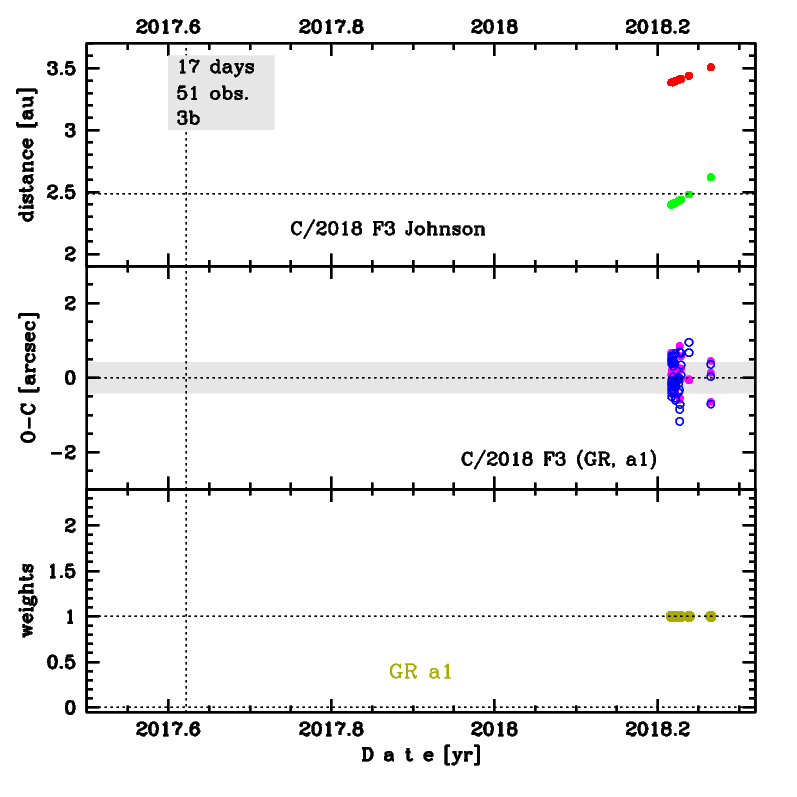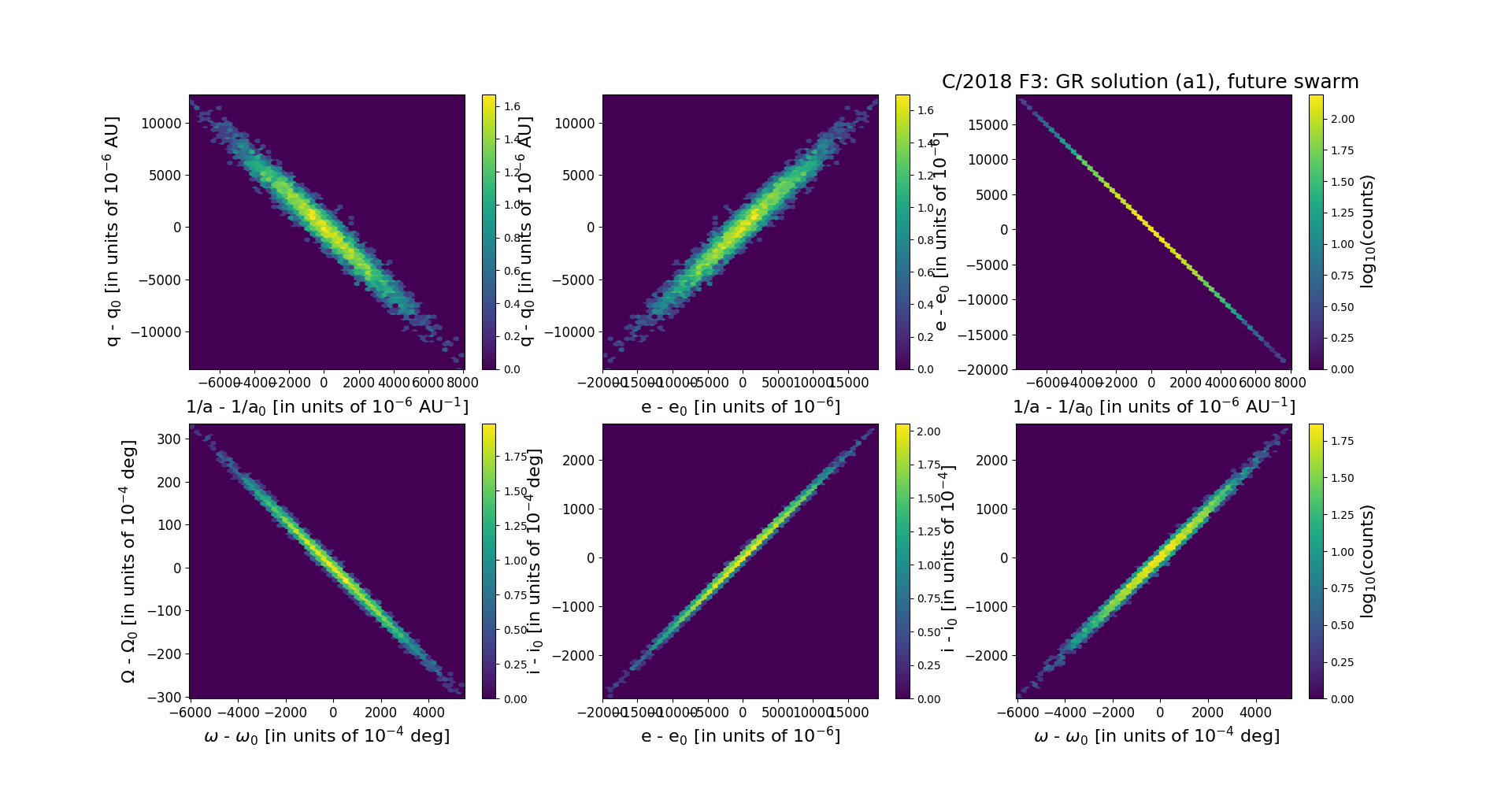C/2018 F3 Johnson
more info
Comet C/2018 C2 was discovered on 20 March 2018, about seven months after its perihelion passage and was was last seen on less than a three weeks later on 6 April.
Therefore, the solution given here is based on post-perihelion data, spans over 0.047 yr in a very narrow range of heliocentric distances from 3.38 au to 3.51 au, and orbital parameters are uncertain (orbit of 3b quality class).
Therefore, the solution given here is based on post-perihelion data, spans over 0.047 yr in a very narrow range of heliocentric distances from 3.38 au to 3.51 au, and orbital parameters are uncertain (orbit of 3b quality class).
| solution description | ||
|---|---|---|
| number of observations | 51 | |
| data interval | 2018 03 20 – 2018 04 06 | |
| data type | observed only after perihelion (POST) | |
| data arc selection | entire data set (STD) | |
| range of heliocentric distances | 3.38 au – 3.51au | |
| detectability of NG effects in the comet's motion | NG effects not determinable | |
| type of model of motion | GR - gravitational orbit | |
| data weighting | NO | |
| number of residuals | 88 | |
| RMS [arcseconds] | 0.42 | |
| orbit quality class | 3b | |
| orbital elements (barycentric ecliptic J2000) | ||
|---|---|---|
| Epoch | 2319 01 05 | |
| perihelion date | 2017 08 15.71385143 | ± 0.52788826 |
| perihelion distance [au] | 2.47913394 | ± 0.00374578 |
| eccentricity | 0.99986073 | ± 0.00576806 |
| argument of perihelion [°] | 292.914929 | ± 0.169983 |
| ascending node [°] | 172.946311 | ± 0.009431 |
| inclination [°] | 105.544001 | ± 0.082823 |
| reciprocal semi-major axis [10-6 au-1] | 56.18 | ± 2,326.71 |
| file containing 5001 VCs swarm |
|---|
| 2018f3a1.bpl |

Upper panel: Time distribution of positional observations with corresponding heliocentric (red curve) and geocentric (green curve) distance at which they were taken. The horizontal dotted line shows the perihelion distance for a given comet whereas vertical dotted line — the moment of perihelion passage.
Middle panel(s): O-C diagram for a given solution (sometimes in comparison to another solution available in CODE), where residuals in right ascension are shown using magenta dots and in declination by blue open circles.
Lowest panel: Relative weights for a given data set(s).
Middle panel(s): O-C diagram for a given solution (sometimes in comparison to another solution available in CODE), where residuals in right ascension are shown using magenta dots and in declination by blue open circles.
Lowest panel: Relative weights for a given data set(s).
